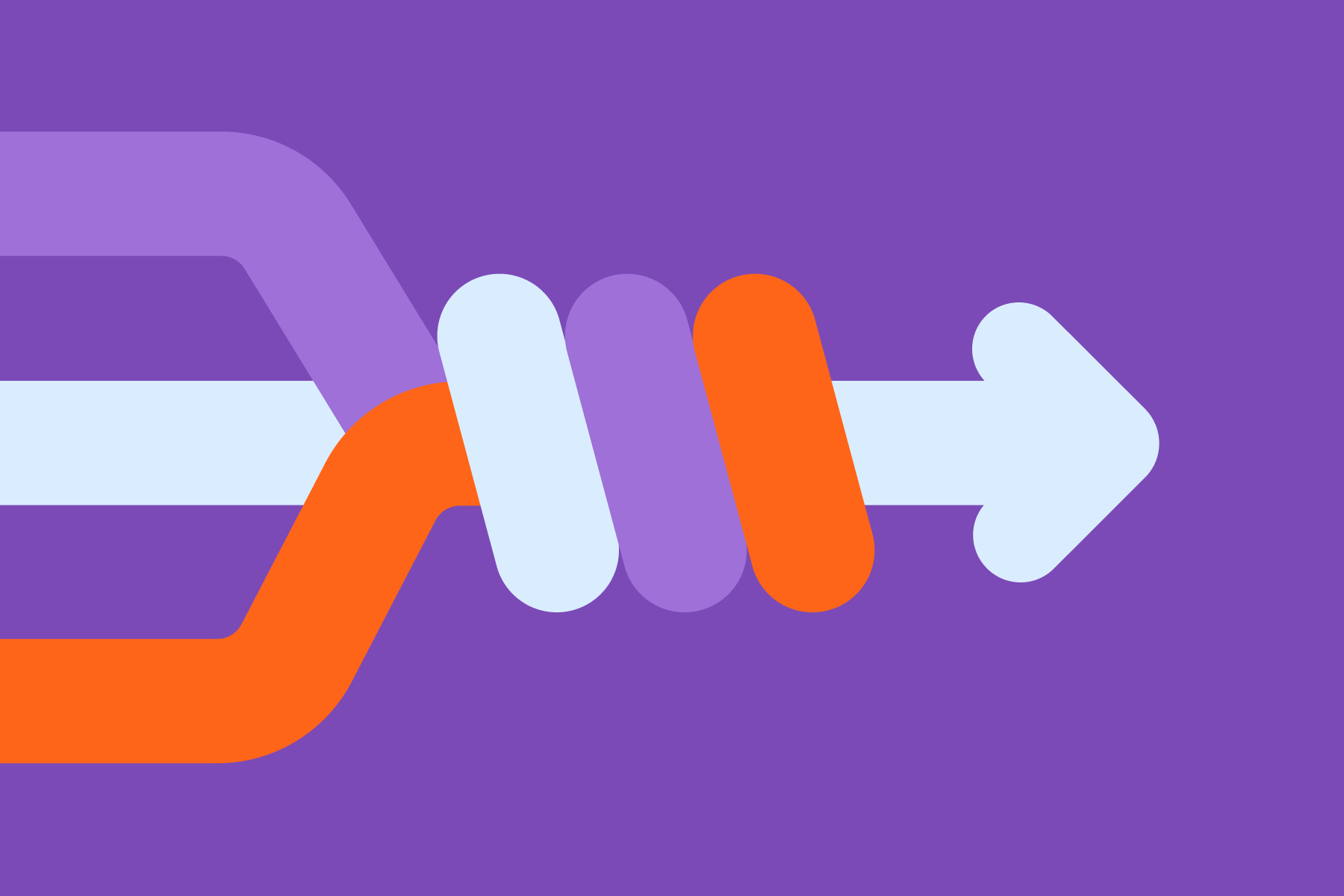6 Marketing Tactics for Your First 100 SaaS Customers
Laura Bolaños
October 28, 2024

Meet Laura Bolaños, a seasoned startup advisor and the innovative mind behind eComJungle, a consultancy that empowers SaaS entrepreneurs to navigate B2B marketing and social selling. In the special guest post for Aimers, Laura shares how to effectively acquire your first 100 SaaS customers. Prepare to unpack actionable insights, allowing you to master customer acquisition.
In the hyper-accelerated landscape of SaaS, the path to your first 100 customers isn't just a numbers game, it's an art form that requires both strategic thinking and tactical execution. Before diving into this article, let's decode the crucial difference between strategy and tactics, a distinction that often blurs in the digital gold rush.
Strategy vs. Tactics: The Critical Distinction
Strategy is your master plan, the high-level vision that answers the “why” and “what” of your market approach. It's your North Star, encompassing:
- Market positioning
- Value proposition architecture
- Long-term competitive advantages
- Resource allocation frameworks
- Core customer segment identification
Tactics are your ground-level execution plans, the “how” that brings your strategy to life. They're the actionable steps that:
- Generate immediate results
- Create measurable outcomes
- Test market hypotheses
- Build momentum
- Drive daily progress
Think of strategy as the architectural blueprint and tactics as the construction tools. You need both to build a sustainable SaaS business, but they serve distinctly different purposes in your growth journey.
In this article, I'll focus on tactics. However, before implementing them, ensure they align with your long-term strategy. Avoid pursuing quick wins that won't create lasting opportunities.
1. Content Marketing with SEO Focus: The Digital Breadcrumb Trail
Content marketing isn't just about posting blogs, or social media posts, it's about creating digital desire paths that lead directly to your solution. In an era where attention is the new currency, your content needs to be both magnetic and strategic.
Tactical Implementation:
- Conduct keyword research focusing on long-tail keywords with clear purchase intent:
- Use tools like Ahrefs to identify keywords with high business value but moderate competition
- Focus on terms that indicate purchase readiness (e.g., “alternatives to [competitor],” “best tools for [problem]”)
- Map keywords to specific stages of your customer journey
- Create in-depth content around these keywords:
- Develop comprehensive guides that showcase your SaaS
- Include original research and data points
- Feature expert interviews and unique insights
- Create content that becomes the definitive resource in your niche
- Optimize for featured snippets:
- Structure content with clear headings and bullet points
- Answer specific questions directly and concisely
- Use data and statistics prominently
- Include step-by-step processes
- Optimize meta descriptions and title tags
- Build topical authority through content clusters:
- Create pillar pages for main topics
- Develop supporting content that links back to pillar pages
- Use internal linking strategically
- Update content regularly with fresh data and insights
2. Strategic Free Trial Program
Offering a free trial eliminates the friction that potential customers face when evaluating your product. Users can experience the value of your software without committing upfront, increasing the likelihood of engagement and exploration.
Before diving into implementation, understanding the psychological principles that drive trial conversion is crucial:
- Loss Aversion: users become attached to features during the trial period.
- Urgency: time limitations create motivation to act.
- Value Demonstration: users need to experience “aha moments” quickly
- Investment: the more users invest in setup/configuration, the higher the conversion rate.
- Social Proof: showing other users' success during the trial period increases confidence.
Design a free trial program that showcases your product's value while creating urgency. A strategic free trial program, when executed effectively, not only drives user acquisition but also helps refine your product-market fit and pricing strategy, ultimately boosting growth and long-term retention.
Tactical Implementation:
- 14-day trial period (optimal for most SaaS products)
- Required credit card only for premium features
- Automated onboarding emails
- Clear upgrade paths
Real-Life Strategy From My SaaS Advisory Practice
I developed a strategic approach for a client using a 14-day trial period with a behavioral twist. Targeting members of the Reddit group r/SaaS, we invited them to “roast my SaaS”, Through storytelling, we shared our background and SaaS concept, directing them to an exclusive landing page with a free subscription tailored specifically for Reddit members. Within the first hour, we gained 25 users who provided feedback on the product, landing page, and messaging.
We replicated this approach across various Reddit communities, LinkedIn, and X. By the end of the week, we had over 100 users engaging with the 14-day trial. On day 10, we launched an email marketing sequence with an interactive poll to gather further insights. Users who completed the poll received an extended 3-month free subscription. This tactic resulted in a 65% response rate, and we leveraged this valuable feedback to feature highlights on the website for our official launch.
3. Product Hunt Launch Strategy
Product Hunt is not merely a launch platform but a sophisticated community of early adopters, founders, and technology enthusiasts. Your launch strategy should reflect this understanding, focusing on building relationships rather than merely accumulating upvotes.
The difference between a successful Product Hunt launch and a transformative one often lies in the details – the thoughtful responses, the quick iterations based on feedback, and the authentic community engagement that transforms casual visitors into passionate advocates for your solution.
A well-executed Product Hunt launch can drive significant initial traction.
Tactical Implementation:
- Build anticipation 2–3 weeks before launch
- Prepare compelling visuals and copy
- Engage with product hunters and the community
- Follow up with all commenters
Launch Day Checklist:
- [ ] Early morning PST launch time
- [ ] Founder actively responding to comments
- [ ] Share behind-the-scenes story
- [ ] Special launch day offer
- [ ] Social media cross-promotion
Document everything, from user feedback to engagement patterns. This data becomes invaluable for future product iterations and marketing strategies.
4. Strategic Partnership Program
Partner with complementary products to expand reach and credibility. The goal isn't just to form partnerships, but to create sustainable, mutually beneficial relationships that drive long-term growth for all parties involved.
In the early stages of a SaaS business, credibility exists as a scarce resource. Strategic partnerships with established players effectively transfer trust and credibility to your emerging brand. When a recognized company aligns with your solution, they implicitly endorse your capability to deliver value. This borrowed credibility dramatically shortens the trust-building cycle with potential customers.
Tactical Implementation:
- Identify partners with overlapping customer base
- Create mutual value proposition
- Develop co-marketing initiatives
- Build integration if applicable
5. Community-Led Growth
Unlike traditional marketing channels, communities create self-sustaining ecosystems where users become advocates, teachers, and innovators – all while driving organic growth.
Build a community around your product to drive organic growth and retention.
As an example, let’s take Notion’s community-first approach:
Phase 1: Template Gallery
- User-generated templates
- Community contributions
- Organic growth through sharing
Phase 2: Ambassador Program
- Community leaders
- Local events
- Knowledge sharing
Phase 3: Educational Content
- Notion Certified
- Community workshops
- User success stories
Tactical Implementation:
- Create valuable free resources
- Host regular webinars
- Build public roadmap
- Encourage user-generated content
Real-Life Strategy From My SaaS Advisory Practice
For one of my clients, a blockchain-based gaming app, we built a community on Discord to engage early adopters and gather valuable feedback. Our strategy involved hosting a series of audio events, introducing the project, and inviting participants to join as beta testers through a dedicated Discord server. Over six months, this approach allowed us to amass the desired number of beta users and insights.
Community members were encouraged to co-create the game’s lore, with top ideas, voted by the community, and rewarded through project NFTs, offering them partial ownership. These beta users then became project ambassadors on social media, while our community space fostered a collaborative environment where creativity thrived.
6. Targeted LinkedIn Outreach
For B2B SaaS acquisition, LinkedIn stands as the premier platform for targeted outreach, boasting an environment where business decisions are made and professional relationships flourish. With more than 1 billion users and 65 million decision-makers, this social network offers unprecedented access to qualified prospects.
The goal is not just to reach prospects, but to create meaningful connections that convert into lasting business relationships.
Tactical Implementation:
- Identify decision-makers
- Personalize connection requests
- Share valuable content
- Engage before pitching
BONUS: Tracking Key Metrics
Metrics should not be viewed in isolation but as interconnected indicators of your SaaS business health. Regular monitoring and analysis of the following metrics will help guide strategic decisions and optimize growth strategies.
- Customer Acquisition Cost (CAC)
- Time to First 100 Customers
- Conversion Rate by Channel
- Customer Lifetime Value (CLV)
- Net Promoter Score (NPS)
Focus on channels that show early traction and double down on what works. The key is to maintain a consistent presence while being agile enough to pivot based on results.
The art of acquiring your first 100 SaaS customers lies in the delicate balance between strategic vision and tactical execution. Success requires both the macro view of market dynamics and the micro-focus on daily operations.
In the digital age, the most successful companies aren't just the ones with the best product, they're the ones that master the art of finding and nurturing their ideal customers through sophisticated, multi-channel approaches.
Takeaways:
- Differentiate strategy vs. tactics:
- Strategy is your overall vision (the “why” and “what”).
- Tactics are the actionable steps (the “how”) that bring your strategy to life. Align tactics with your long-term strategy for lasting impact.
- Content marketing with SEO:
- Conduct keyword research, targeting long-tail keywords with purchase intent.
- Create in-depth, valuable content that positions you as an authority in your niche.
- Optimize for featured snippets and build topical authority using content clusters.
- Effective free trial program:
- Offer a strategic free trial, ideally 14 days, to lower user acquisition friction.
- Incorporate psychological principles (urgency, social proof, value demonstration) to enhance conversion rates.
- Automate onboarding to showcase product value quickly.
- Leverage Product Hunt:
- Build anticipation weeks before your launch and engage authentically with the community.
- Use a launch day checklist to ensure a smooth process, including prompt responses to comments and special offers.
- Document feedback for future improvements and marketing strategies.
- Establish strategic partnerships:
- Partner with complementary products to enhance credibility and reach.
- Create co-marketing initiatives and explore integration opportunities to deliver mutual value.
- Community-led growth:
- Develop a thriving community around your product, where users drive organic growth.
- Implement a phased approach: start with user-generated resources, form an ambassador program, and create educational content.
- Targeted LinkedIn outreach:
- Utilize LinkedIn for B2B targeted outreach and meaningful connection building.
- Personalize messages and share valuable insights before pitching your product.
- Track the relevant metrics:
- Monitor interconnected metrics like Customer Acquisition Cost (CAC), conversion rates, and Customer Lifetime Value (CLV) for informed decision-making.
- Focus on channels with early traction and remain adaptable.
- Balance strategy and tactical execution:
- The key to acquiring the first 100 customers lies in seamlessly integrating your strategic vision with effective tactical actions.
- Successful SaaS companies excel in finding and nurturing ideal customers through comprehensive, multi-channel approaches.
Follow Laura on LinkedIn, where she regularly shares great advice on business development and social selling for SaaS startups!










.png)

